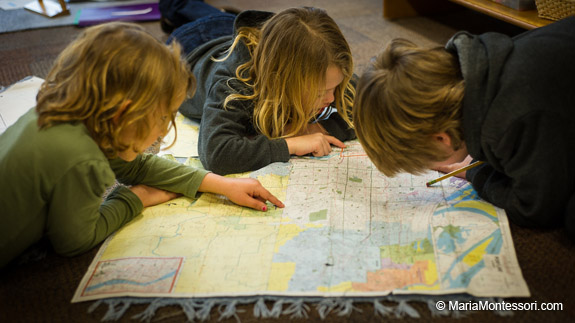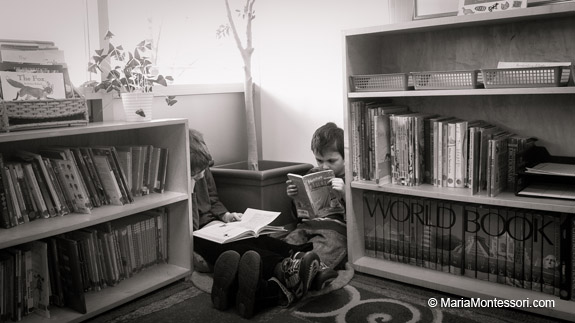
October 30, 2022
By the slenderest thread, the organic order of our community is held together these days. In much the same way as the universe, our lives are rapidly expanding. As in the solar system, our planets are in constant, rapid, and different motions. At every moment it seems as if our community of thirty-eight children could fly apart, hurdling furiously into unknowable space propelled by the centrifugal force of our separate and intense interests. Yet with absolute integrity, we remain in our communal early elementary orbit, sucked relentlessly together by our need to contend outrageously with one another. It is only our love of grace and reason that dignifies the opposition of these two forces with the conventions of civilized behavior. Love, imagination, and intelligence are our greatest allies as we do our cosmic dance to the music of the spheres, fueled by the irresistible inner drive of our motivation. Yes, by the slenderest thread…, but this is a space-age filament, this Montessori education, and while it is never felt, neither does its fiber ever fail to hold fast.
Two boys took turns reading with zest and dramatic expression the tale from Shakespeare’s “Midsummer Night’s Dream” to a small group of children, alternating with one another as their voices gave out. How well they read this difficult language and how genuinely they enjoyed it!
Two children worked on an experiment that demonstrates the mouth of the river. First, they laboriously spread sticky potter’s clay (mud) inside the V-shaped form that angles downward. Then they embedded into it rocks of different sizes and sprinkled them with gravel. Next, they added a layer of rough sand followed by a layer of fine white sand. Finally, they covered it all with a thin layer of sawdust. Taking a gallon jug of water the children poured it steadily onto the course and observe the result. They poured another jug of water with greater speed and force and compared their second result to the first.
Groups of children have sat together reading the scripts of “Midsummer Night’s Dream,” abridged for children. One child took out D’Aulaire’s book of Greek mythology and looked up the story of Theseus and the Minotaur. Another longed for his father’s Yale edition of Shakespeare’s complete works until I showed him one on our shelf. Now children were exploring three separate sources for the same story.
An older child, the only one who had not broken into creative writing, struggled with a blank sheet of paper for an hour and a half before writing an especially compelling opening sentence that included a parenthetical expression. He birthed three more sentences in hard labor during the next hour and then, the following day, wrote pages. When I said, after reading the first pages of the story that I was eager to see what would happen next, he responded that he too could hardly wait to find out.
Two children completed writing the scenes of the play they had been working on for weeks, wrote down the characters and listed them scene by scene, and then, before casting the play, went off to work on geography and geometry for a few days. Life does seek balance.
Borrowing and carrying while subtracting and adding in the thousands is being pursued with relish by several. Long division with the racks and tubes held a child’s fascination for weeks, long enough to surpass the interest of all his partners so that he eventually sat alone operating all the boards of hierarchies by himself.

A group of children learned the names of the continents and oceans, traced the world map, colored it meticulously, and wrote the name labels, cut them out, and pasted them onto their map. Two of them carried out all those same steps for the map of North America and have now moved on to coloring the map they have traced of the United States.
Twenty children left campus for the ballet, “Midsummer Night’s Dream,” and returned amazed that they could tell what was happening even though there were no words. They sat at the picnic table for lunch and recalled with one another scene after scene.
The fifteen children who remained at school reviewed the parts of a flag and gathered books on the history of the American flag. Particularly fascinating to them was the flag with the snake and the motto, “Don’t tread on me.” For lunch, we had a picnic in the juniper grove and the children brought out their violins for an impromptu jam session. Some of them joined a parent in the vegetable garden to help work out the math (height of the opening, diameter of the circle) for the beanpole teepee that will be large enough to seat four children in the shade of the bean vines.
Four children worked on the checkerboard for long multiplication while two others read and matched animal “guess-who” stories to pictures of animals. Another two children laid out the animal questions and their answers after having built a report on leopards. Two children discovered that they could compose a report directly on paper, skipping for the first time the step of using the moveable alphabet. I demonstrated to them and several other children how to read a paragraph or two, take one-word notes to recall information, and then write it down in one’s own words.
I gave a child a first lesson in going over her writing to place every period and capital in her favorite color. I introduced several children to word problems in addition. Someone finished sewing on a stick fastener and working a buttonhole by hand onto a bag she had woven on a loom. She then began crocheting the shoulder strap onto it.
Geometry’s long run in our classroom may be slowing down or even giving way to some new pursuit. We shall see. In the meantime, we have so enjoyed our sides and angles and heights and bases, our perimeters and areas and diagonals and parallel sides. We have enjoyed seeing those all-too-secretive triangles and rhombi and trapezoids, so intransigent in withholding the secrets of their areas, being transformed into rectangles immediately acquiescent in surrendering their areas.
Flower arranging has attracted a new group of children who look over our weekly bunch of flowers with a designer’s eye for form and color to see which should be placed together and which separated. Several vases are chosen, and then a particular vase is selected for each floral arrangement. Carefully the stems are measured and cut to a length proportional to the vase, and the leaves that would be submerged in water are removed. At last, after the clean-up, comes the placement around the environment of each arrangement. The children’s satisfaction is great for they have used their imagination, intelligence, esthetic sense, and practical life skills to serve their community. [We are grateful to the parents and children from Liz’s class for delivering flowers to us each week.]
Pointillism and one child’s recognition of it stirred a great wave of interest in art and artists. Taking a magnifying glass to investigate printed pictures of pointillists’ paintings, the children uncovered the interesting fact that pictures in books, magazines, and newspapers are all composed of tiny dots of color. Whereas these pictures fail miserably to show the brush strokes and techniques of schools and movements of painting, they present a comical situation in regard to pointillism as the children pointed out to me. Just imagine a painting composed of certain tiny little dots of paint being grossly represented by a picture quite differently composed of other tiny little dots of color!
And so we spin and orbit with wild abandon through our days, unconsciously held on course by our irresistible drive to acquire culture and our immeasurable passion to collaborate with one another, and Montessori’s genius for recognizing, supporting, and providing for them.